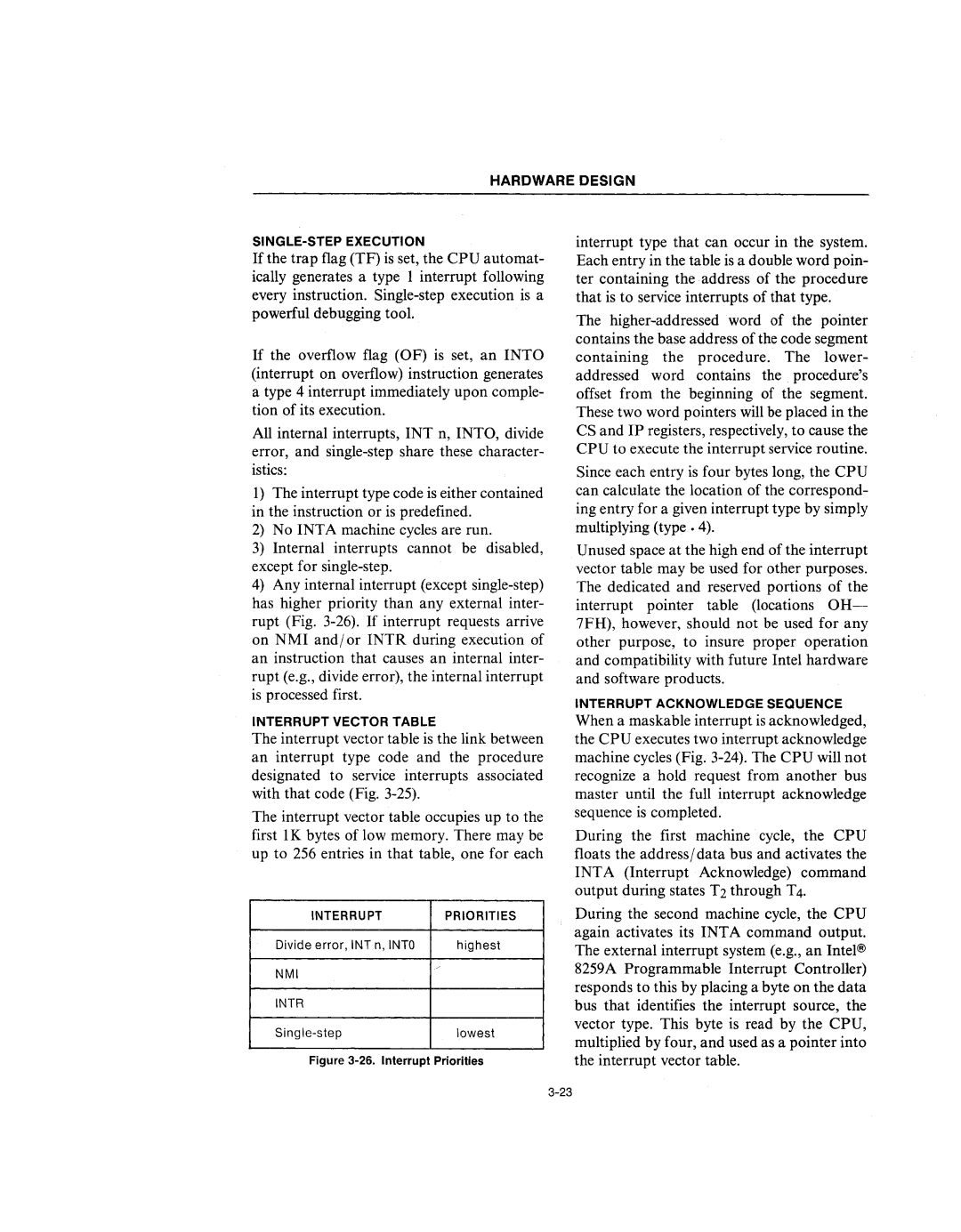
HARDWARE DESIGN
SINGLE-STEP EXECUTION
If the trap flag (TF) is set, the CPU automat- ically generates a type 1 interrupt following every instruction.
If the overflow flag (OF) is set, an INTO (interrupt on overflow) instruction generates
atype 4 interrupt immediately upon comple- tion of its execution.
All internal interrupts, INT n, INTO, divide error, and
1)The interrupt type code is either contained in the instruction or is predefined.
2)No INTA machine cycles are run.
3)Internal interrupts cannot be disabled, except for
4)Any internal interrupt (except
interrupt type that can occur in the system. Each entry in the table is a double word poin- ter containing the address of the procedure that is to service interrupts of that type.
The
Since each entry is four bytes long, the CPU can calculate the location of the correspond- ing entry for a given interrupt type by simply multiplying (type. 4).
Unused space at the high end of the interrupt vector table may be used for other purposes. The dedicated and reserved portions of the interrupt pointer table (locations OH- 7FH), however, should not be used for any other purpose, to insure proper operation and compatibility with future Intel hardware and software products.
INTERRUPT ACKNOWLEDGE SEQUENCE
INTERRUPT VECTOR TABLE
The interrupt vector table is the link between an interrupt type code and the procedure designated to service interrupts associated with that code (Fig.
The interrupt vector table occupies up to the first 1K bytes of low memory. There may be up to 256 entries in that table, one for each
When a maskable interrupt is acknowledged, the CPU executes two interrupt acknowledge machine cycles (Fig.
During the first machine cycle, the CPU floats the address/ data bus and activates the INT A (Interrupt Acknowledge) command output during states T2 through T4.
INTERRUPT | PRIORITIES |
Divide error, INT n, INTO | highest |
NMI |
|
INTR |
|
Sing | lowest |
Figure 3-26. Interrupt Priorities
During the second machine cycle, the CPU again activates its INTA command output. The external interrupt system (e.g., an Intel® 8259A Programmable Interrupt Controller) responds to this by placing a byte on the data bus that identifies the interrupt source, the vector type. This byte is read by the CPU, multiplied by four, and used as a pointer into the interrupt vector table.
